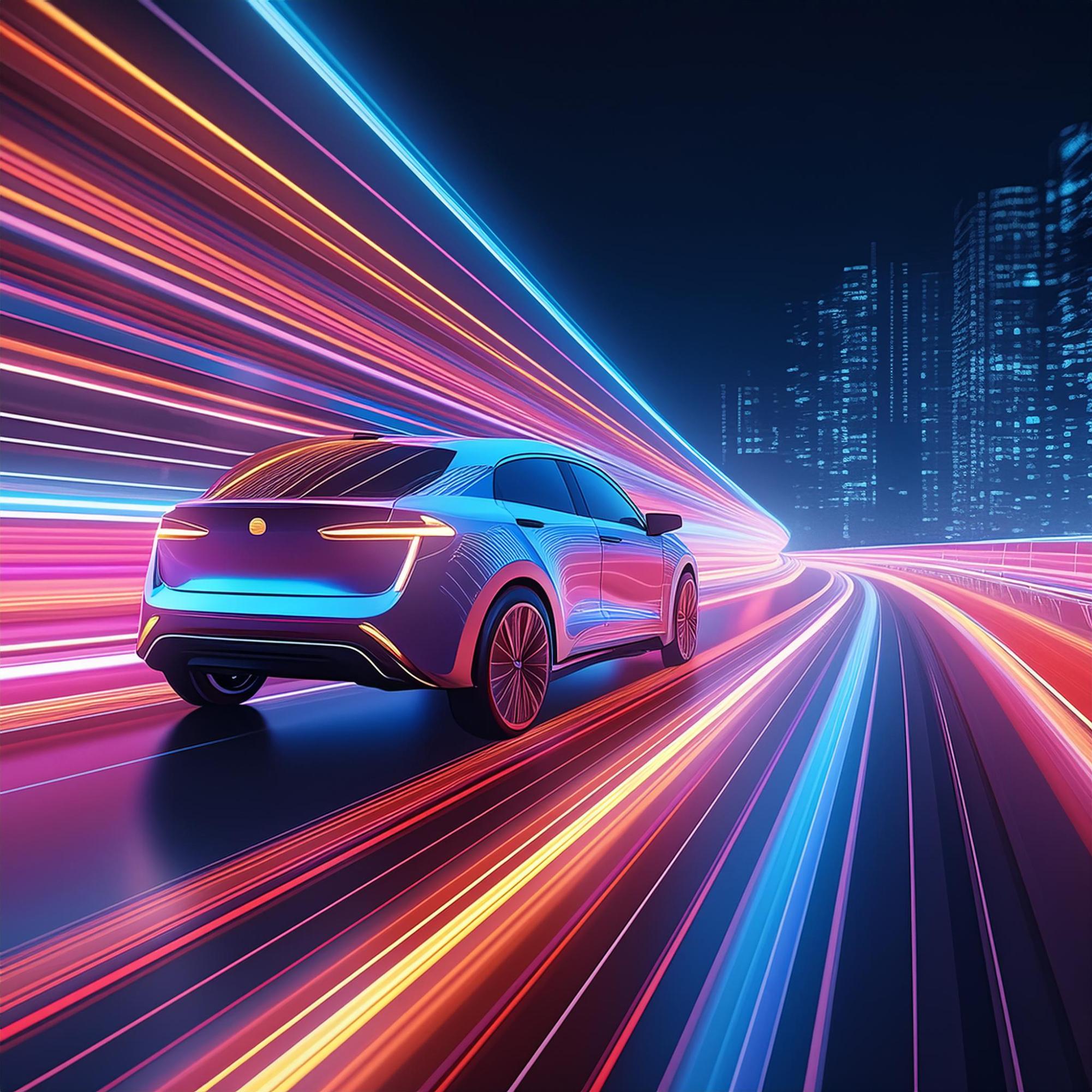As the world races towards electrification, the allure of zero-emission travel clashes with the hidden costs of lithium extraction, the looming specter of e-waste and the logistical hurdles of charging infrastructure.
Tracing back to the early nineteenth century, electric vehicles (EVs) emerged as a cleaner alternative to steam and gas-powered cars and gained popularity in urban areas due to their lack of smell and noise. After Henry Ford introduced the mass-produced Model T, a gas-powered car, the popularity surrounding EVs would continue to decline as oil became readily accessible. By 1912, gas cars were more affordable for the public.
But with advancements in battery technology, growing environmental concerns and government backing, the hype around EVs has resurged.
From tax credits to low maintenance costs and the allure of reducing one’s carbon footprint, the appeal of electric cars is undeniable. However, a closer examination of how electric cars came to be reveals a nuanced picture that raises questions about the unspoken environmental impact and practicality of these vehicles.
Continuing to cost more than a standard gas-powered car, the average transaction price for EVs in 2023 was $53,469 in contrast to a gas-powered car priced at an average of $48,334, according to Kelley Blue Book, an automotive research and vehicle valuation company.
Despite the alarming price, there are tax incentives and vehicle rebates offered by local, state and federal agencies that aim to encourage consumers to purchase an electric vehicle.
Senior Isaac Ramirez obtained his Tesla through rebates. His car was offered to him at a cheaper price, compared to a gas-powered car.
“My family convinced me to lease a Tesla because I’d be saving money on gas in the long run,” he said. “I believe electric cars are the future.”
In the state of California, the Clean Vehicle Rebate Program (CVRP) not only grants EV drivers with a carpool sticker to drive solo in carpool lanes but also offers up to $7500 in vehicle rebates in a first-come, first-served system to California residents that purchase or lease a new battery electric vehicle (BEV), plug-in hybrid electric vehicle (PHEV) or a fuel cell electric vehicle (FCEV) in order to promote cleaner vehicles on California roads.
The production of EVs involves the extraction and processing of raw materials such as lithium, nickel and cobalt for batteries.
These raw materials are primarily concentrated in countries such as Australia and Chile. Lithium mining has been associated with water contamination, disruption of local ecosystems and environmental degradation.
Generally, lithium extraction begins when miners drill a hole into salt flats and pump salty lithium-rich brine to the surface and into evaporation pools. Months later when the water evaporates, it leaves behind a mixture of minerals, which is then filtered and transferred into a different evaporation pool. After 12 to 18 months of repeating this procedure, the resulting product is adequately purified for lithium carbonate extraction.
This popular method requires large quantities of water, which deprives arid regions of water where it is already scarce.
“In order to produce one ton of lithium, 20 to 21 million liters or approximately 500,000 gallons of freshwater are required,” AP Environmental Science teacher Ms. Tracey Kim said.
Chemicals such as sulfuric acid and sodium hydroxide used in the lithium extraction process permeate soil and water and subsequently contaminate water sources and harm local species.
“I believe any type of car, regardless of it being gasoline-powered or electric, is bad for the environment overall,” Ramirez said. “They still emit carbon dioxide, even if it’s a reduced amount.”
The environmental impact of EV batteries extends beyond the manufacturing stage. The disposal of lithium-ion batteries poses challenges related to recycling and waste management, as lithium batteries contain flammable and toxic materials that can be released into the environment if not properly handled.
A 2018 survey conducted by the California Product Stewardship Council revealed that lithium-ion batteries caused approximately 40% of fires at waste facilities in a two-year period, resulting in around $8.5 million dollars in damages to a waste recovery facility in San Carlos, CA in 2016. Fires in waste facilities caused by lithium batteries risk the health of employees and first responders due to the combined release of toxic fumes and high heat.
A report released by Resource Recycling Systems estimates that 75% to 92% of lithium-ion batteries are incorrectly disposed of.
In the United States and the European Union, only one percent of lithium-ion batteries are recycled in comparison to 99 percent of lead-acid batteries, as acclaimed by the Journal of the Indian Institute of Science.
Challenges that erupt in recycling lithium-ion batteries vary from ever-changing batteries to inadequate government regulations and expensive shipping of lithium-ion batteries. Shipping these batteries typically involves more labor and resources than extracting raw minerals, thus contributing to the cycle of e-waste.
Ms. Kim emphasizes that there exist tradeoffs for any product purchased.
“There is a cost-benefit to all natural resources used by first-world countries,” she said.
The County of Los Angeles offers its residents with information and addresses to permanent e-waste collection centers across the county, where locals can drop off their e-waste for free at their nearest lo

cation from nine a.m. to three p.m. on weekends.
Aside from recycling lithium batteries, car manufacturers have reported battery-related fires, prompting car recalls and safety inspections.
Apart from the environmental issues and hazards that arise from the production and disposal of lithium batteries in EVs, other issues such as reliability and lack of charging infrastructure discourage consumers that are considering purchasing an electric vehicle.
The lack of charging infrastructure for electric cars in the U.S. has generated “range anxiety” in consumers apprehensive about purchasing an EV. Due to low mile ranges, consumers fear being stranded in an area with no charging ports, further exacerbating the challenge of widespread EV ownership in the U.S.
The uneasiness in purchasing an electric car is additionally demonstrated by car
owners in Northern and Eastern states in the U.S. that experience winter conditions. Colder temperatures decrease the charging capacity of EVs, causing owners to wait for longer periods for their cars to charge, thus becoming an inconvenience.
Even so, EV manufacturers continue to improve the efficiency and reliability of lithium-ion batteries.
In 2022, the average mile range of an electric vehicle was 210 miles. As of 2024, the average mileage range in new electric car models is estimated to be 300 miles, with some electric car models such as the 2024 Lucid Air possessing up to 427 miles in one charge.
State legislators from the California Air Resources Board approved a landmark rule to ban the sale of n
ew gasoline-powered cars by 2035, setting an interim target of requiring 35% of new gas-powered cars to produce zero tailpipe emissions by 2026. This move has influenced other states such as Connecticut, Oregon, New York and New Jersey to propose the same idea.
“I don’t think it’ll be mandated for residents, but it could be mandated for state or federally-owned vehicles in the state of California,” automotive teacher Mr. Joseph Agruso said.
Mr. Agruso keeps up with the demand and adaptation of EVs by observing local car companies on Van Nuys Boulevard such as Galpin Ford and Toyota. He uses this information to improve what he teaches his students to enhance their skills and align with what is in demand in the automotive industry.
Unfazed by the adoption of EVs, he embraces electric vehicles in his classroom by demonstrating an electric vehicle built by students to demonstrate how simple it is to construct and work on an electric car.
“The components there are as regular as a standard gas vehicle, the only difference is that the maintenance issues are a lot less than a gas-powered car,” Mr. Agruso said.
With lithium batteries dominating the EV market, some alternatives warrant consideration. Hydrogen fuel cell cars, for example, utilize hydrogen gas to generate electricity, emitting water vapor as its byproduct.
While these vehicles continue to be relatively rare and face their own adversities such as limited infrastructure and inaccessibility for hydrogen refueling, expensive production costs and flammability, they represent a fair alternative to lithium-based electric cars.
Despite these challenges, the EV market continues to grow, with projections by Progressive indicating EVs account for nearly all new car sales in the next 16 years.
“A lot can happen in the next 10 to 25 years, and innovations provided by this generation will be exciting to discover,” Ms. Kim said.
Electric cars have significant advantages in terms of environmental sustainability and performance. However, it’s essential to recognize the trade-offs and obstacles present with their widespread adoption.
As technology advances and infrastructure progresses, the viability of EVs as a cleaner alternative to traditional gasoline-powered vehicles will only continue to improve.
While they may not be perfect, EVs represent a crucial step towards a more sustainable future for transportation.
The abridged version of this article appeared in the Spring 2024 print edition. This is an uncut version.




